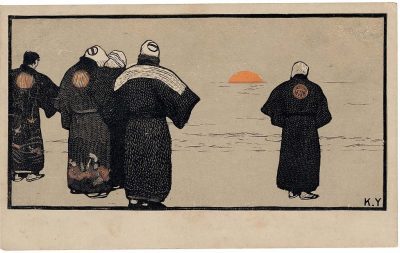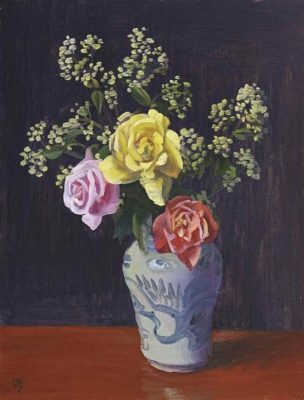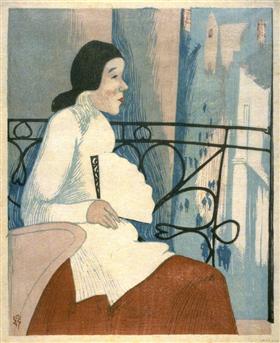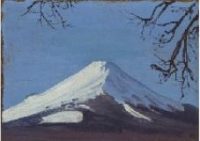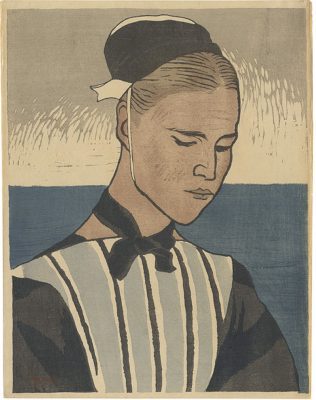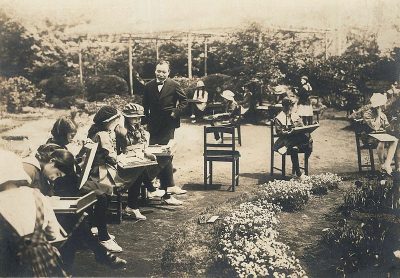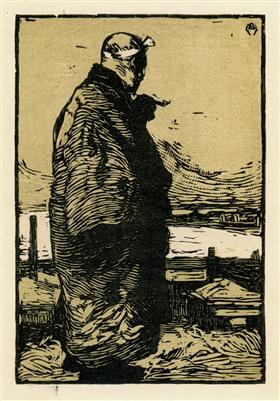Japanese Art and Kanae Yamamoto (Part Two): Impact of Europe and Socialism
Lee Jay Walker
Modern Tokyo Times
In my first article about Kanae Yamamoto (1882-1946), the emphasis was on his childhood, areas related to poverty during his early years, and how he left for Europe in 1912. Therefore, this article will further focus on the natural progression of Kanae and how he responded to a new world that was opening up to him.
Kanae took the bold move to go to France by ship. Hence, he set sail to Marseille in 1912 and took in the new world. Not surprisingly, he witnessed many things on the way and after arriving in France the city of Paris was on his horizon. After all, Paris in this period of history was the center of Western art and this reality also attracted other Japanese artists before – and after Kanae travelled to Paris.
Even before Kanae began his journey to Europe certain socialist ideals had impacted on him. Yet, one can only guess at the wonders, and disappointments, that he witnessed during his travel and stay in Europe. This notably applies to his initial focus being art, culture, learning, knowledge, and encompassing this within his future artwork. However, by 1914 the drums of a war were beating throughout the continent, therefore, making it back to Japan in 1916 meant that he would utilise the rail network including the Trans-Siberian Railway.
In other words, from the early period at the Ecole des Beaux-Arts – to witnessing the devastation of the continent by imperial powers, who glorified nationalism and the self-preservation of the ruling elites – all must have impacted greatly on Kanae. Art, in this sense, must have appeared a hidden escapism for Kanae by 1916. Therefore, this thoughtful individual must have felt the sense of foreboding that dented his time in Europe.
Yet, prior to the dramatic events of his return journey through a war-torn Europe, more mundane times were spent. Also, like many people who travel abroad, he focused on the internal Japanese community in France. This reality meant that he spent artistic and relaxing times with Sanzo Wada, Kunishiro Mitsutani, Misei Kosugi, Toson Shimazaki, Ryuzaburo Umehara, Sotaro Yasui, and others. These individuals were a mixture of artists, writers, and other individuals connected with the world that made them tick. Ironically, while Paris was the pulling power, Kanae would gain from his stay in Brittany because he was extremely productive.
In another article I say, “Remarkably, in a historical sense, the ravages of conflict in Europe did not impede his art. Hence, between 1912-1916 he developed his art in Europe despite the hostile climate that was destroying much of Europe. Of significance to Kanae was the impact of Russian peasant crafts along with the impact of children’s art in this nation.”
His short time in Russia impacted greatly on Kanae because, despite the splendour of Paris, it was the revolutionary socialist movement that was growing in Russia that hit a chord with his soul. In this sense, while Europe enabled his art to flourish, the other side of the coin is that socialist ideals meant that he focused heavily on teaching. Therefore, his future artistic work was curtailed by a bigger political ideal.
Kanae sacrificed himself in order to put his energy into the socialist ideals that meant so much to him during this period. This resulted in Kanae founding the Japan Children’s Free Painting Society and Farmers’ Art Movement. Essentially, he valued the reawakening of the proletarian class and held courses in embroidery, painting, woodcarving, and weaving. However, his noble socialist beliefs that he lived by meant that he was spied upon and watched by Japanese authorities at a later date in Japanese history when nationalism began to grow. Paradoxically, in 1919 the more liberal period enabled Kanae to be funded by the Ministry of Education and the Ministry of Agriculture – along with private funding from Mitsubishi.
Not surprisingly, the artistic energy of Kanae was zapped because he gave everything in this period to help the socialist cause. Hence, and tragically from an artistic point of view, he made prints infrequently from 1920 onwards. Likewise, his productive oil paintings prior to this period were also curtailed dramatically.
Modern Tokyo News is part of the Modern Tokyo Times group
http://moderntokyotimes.com Modern Tokyo Times – International News and Japan News
http://sawandjay.com Modern Tokyo Times – Fashion
https://moderntokyonews.com Modern Tokyo News – Tokyo News and International News
http://global-security-news.com Global Security News – Geopolitics and Terrorism
PLEASE JOIN ON TWITTER
https://twitter.com/MTT_News Modern Tokyo Times
PLEASE JOIN ON FACEBOOK
